Filter by
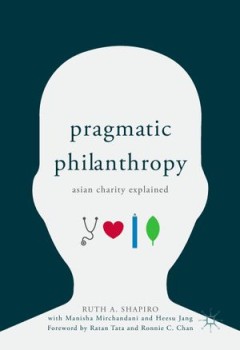
Pragmatic Philanthropy: Asian Charity Explained
Asian Philanthropy and Charitable Organizations; Social Investment in Asia; Social Delivery Organizations; Relationships and Philanthropy in Asia; Ultra-high Net-worth Individuals in Asia; How Social Investment Works in Asia; Impact of Charitable Giving in Asia; Relationship with Elites and Social Investment in Asia
- Edition
- -
- ISBN/ISSN
- 9789811071188
- Collation
- -
- Series Title
- -
- Call Number
- 950 SHA p

Harnessing the Bohemian : artists as innovation partners inrural and remote c…
Harnessing the Bohemian takes a fresh and interdisciplinary perspective on the intractable problem of shrinking populations and resources in remote/rural communities. It challenges the conventional wisdom of community development theories and practices and envisages more central roles for the creative disciplines in revitalising futures planning. It argues that the evolution of technologies, …
- Edition
- -
- ISBN/ISSN
- 9781760460532
- Collation
- -
- Series Title
- -
- Call Number
- 307.1 SKI h
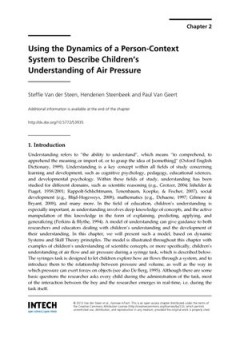
Using the Dynamics of a Person-Context System to Describe Children’s Unders…
Using the Dynamics of a Person-Context System to Describe Children’s Understanding of Air Pressure
- Edition
- -
- ISBN/ISSN
- 9789535108559
- Collation
- -
- Series Title
- -
- Call Number
- -
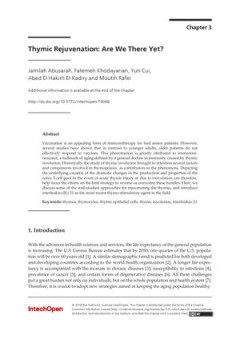
Thymic Rejuvenation Are We There Yet?
Vaccination is an appealing form of immunotherapy for frail senior patients. However, several studies have shown that in contrast to younger adults, older patients do not effectively respond to vaccines. This phenomenon is greatly attributed to immunosenescence, a hallmark of aging defined by a general decline in immunity caused by thymic involution. Historically, the study of thymic involution…
- Edition
- -
- ISBN/ISSN
- 9781789232523
- Collation
- -
- Series Title
- -
- Call Number
- -
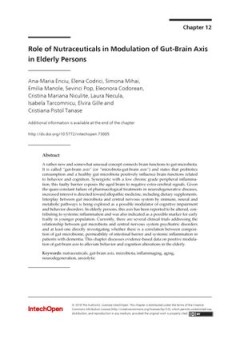
Role of Nutraceuticals in Modulation of Gut-Brain Axis in Elderly Persons
A rather new and somewhat unusual concept connects brain functions to gut microbiota. It is called “gut-brain axis” (or “microbiota-gut-brain axis”) and states that probiotics consumption and a healthy gut microbiota positively influence brain functions related to behavior and cognition. Synergistic with a low chronic grade peripheral inflammation, this faulty barrier exposes the aged b…
- Edition
- -
- ISBN/ISSN
- 9781789232523
- Collation
- -
- Series Title
- -
- Call Number
- -

Growth, StructuralTransformation, and Rural Change in Viet Nam : A Rising Dra…
Many developing countries—Viet Nam included—continue to struggle to raise incomes per capita. A common feature of the growth and development process is a fundamental change in the pattern of economic activity, as households reallocate labour from traditional agriculture to more productive forms of agriculture and modern industrial and service sectors. Broad structural transformation and wid…
- Edition
- -
- ISBN/ISSN
- 978–0–19–879696–1
- Collation
- -
- Series Title
- -
- Call Number
- 307.141 2 GRO

Passages Explorations of the Contemporary City
Informed by the work of writers such as Henri Lefebvre, Paul Ricoeur and Michel de Certeau, this collection of essays examines through multiple lenses eight topics related to the contemporary urban domain. The author employs powerful geographic and literary concepts such as space, narrative, and metaphor to interpret the often-bewildering complexity of the post-modern city. Recalling key aspect…
- Edition
- -
- ISBN/ISSN
- 9781552386750
- Collation
- -
- Series Title
- -
- Call Number
- -
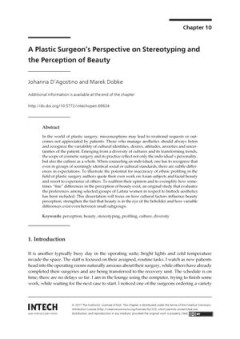
A Plastic Surgeon’s Perspective on Stereotyping and the Perception of Beauty
In the world of plastic surgery, misconceptions may lead to irrational requests or outcomes not appreciated by patients. Those who manage aesthetics should always listen and recognize the variability of cultural identities, desires, attitudes, anxieties and uncertainties of the patient. Emerging from a diversity of cultures and its transforming trends, the scope of cosmetic surgery and its prac…
- Edition
- -
- ISBN/ISSN
- 9789535135814
- Collation
- -
- Series Title
- -
- Call Number
- -
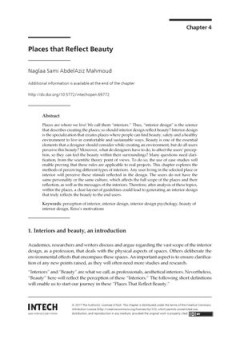
Places that Reflect Beauty
Places are where we live! We call them “interiors.” Thus, “interior design” is the science that describes creating the places; so should interior design reflect beauty? Interior design is the specialization that creates places where people can find beauty, safety and a healthy environment to live in comfortable and sustainable ways. Beauty is one of the essential elements that a designe…
- Edition
- -
- ISBN/ISSN
- 9789535135814
- Collation
- -
- Series Title
- -
- Call Number
- -

On the Design of a Photo Beauty Measurement Mechanism Based on Image Composit…
In this chapter, we propose a machine learning scheme on how to measure the beauty of a photo. Different from traditional measurements that focus on the quality of captured signals, the beauty of photos is based on high-level concepts from the knowledge of photo aesthetics. Because the concept of beauty is mostly defined by human being, the measurement must contain some knowledge obtained from …
- Edition
- -
- ISBN/ISSN
- 9789535135814
- Collation
- -
- Series Title
- -
- Call Number
- -
 Computer Science, Information & General Works
Computer Science, Information & General Works  Philosophy & Psychology
Philosophy & Psychology  Religion
Religion  Social Sciences
Social Sciences  Language
Language  Pure Science
Pure Science  Applied Sciences
Applied Sciences  Art & Recreation
Art & Recreation  Literature
Literature  History & Geography
History & Geography